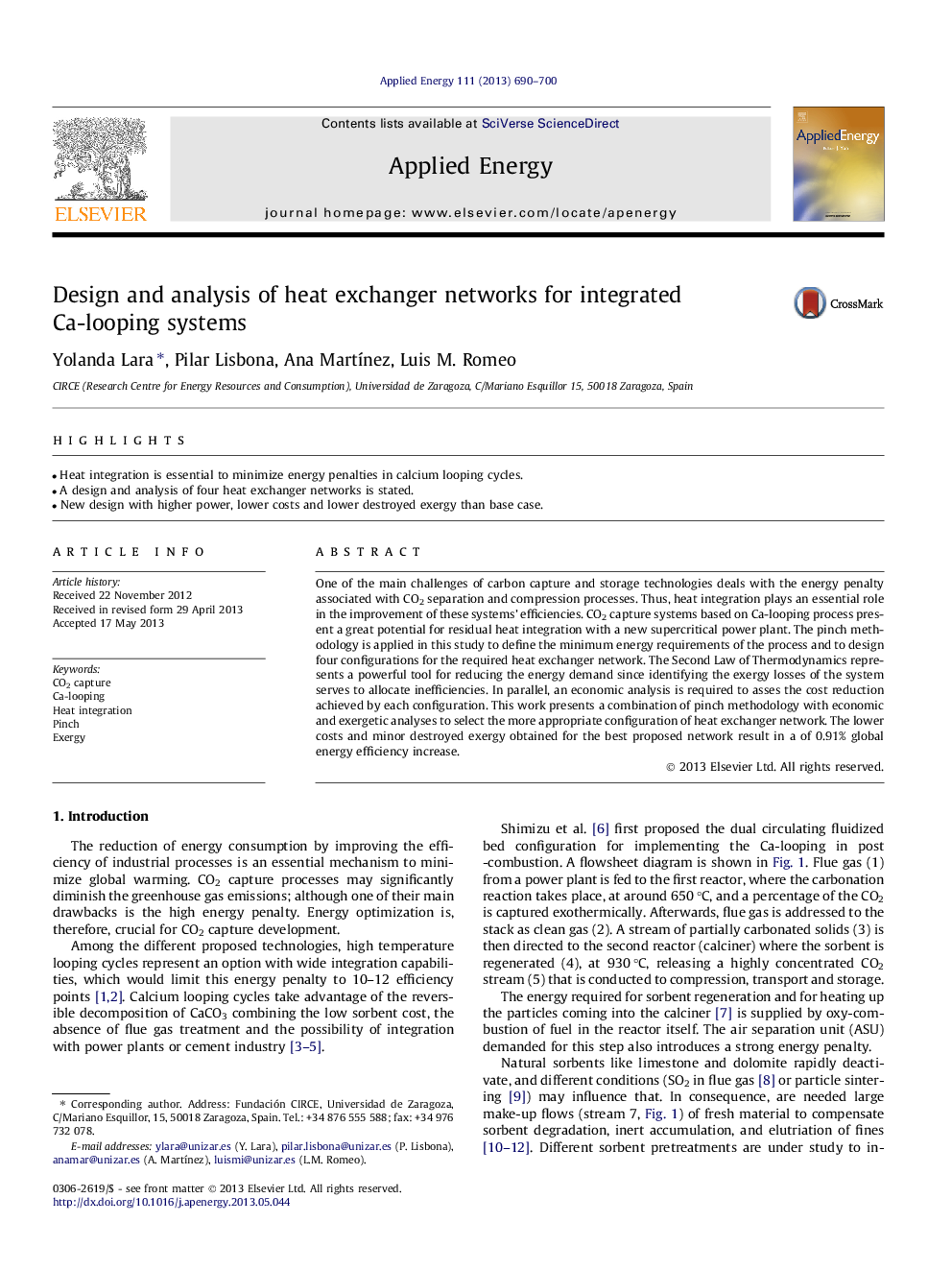| Article ID | Journal | Published Year | Pages | File Type |
|---|---|---|---|---|
| 6692470 | Applied Energy | 2013 | 11 Pages |
Abstract
One of the main challenges of carbon capture and storage technologies deals with the energy penalty associated with CO2 separation and compression processes. Thus, heat integration plays an essential role in the improvement of these systems' efficiencies. CO2 capture systems based on Ca-looping process present a great potential for residual heat integration with a new supercritical power plant. The pinch methodology is applied in this study to define the minimum energy requirements of the process and to design four configurations for the required heat exchanger network. The Second Law of Thermodynamics represents a powerful tool for reducing the energy demand since identifying the exergy losses of the system serves to allocate inefficiencies. In parallel, an economic analysis is required to asses the cost reduction achieved by each configuration. This work presents a combination of pinch methodology with economic and exergetic analyses to select the more appropriate configuration of heat exchanger network. The lower costs and minor destroyed exergy obtained for the best proposed network result in a of 0.91% global energy efficiency increase.
Related Topics
Physical Sciences and Engineering
Energy
Energy Engineering and Power Technology
Authors
Yolanda Lara, Pilar Lisbona, Ana MartÃnez, Luis M. Romeo,
